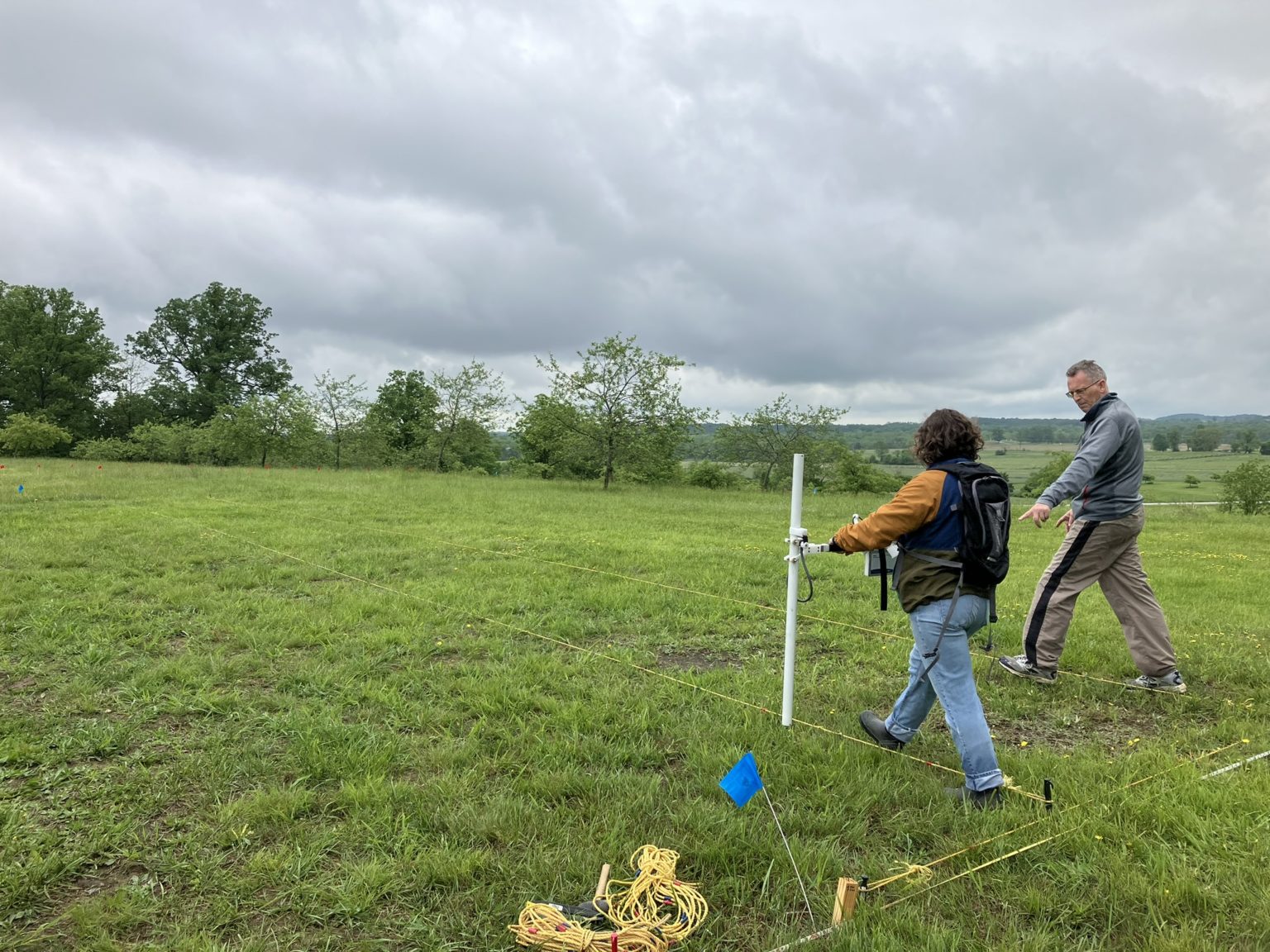Continuing our series in Remote Sensing, this week we are examining Magnetometry
Magnetometry has emerged as a crucial non-invasive technique in archaeology, allowing researchers to detect and map subsurface features by measuring variations in the Earth’s magnetic field. In the Mid-Atlantic region, magnetometry has been instrumental in uncovering significant archaeological sites, offering a deeper understanding of the area’s historical and cultural landscape.
Magnetometry works by detecting subtle changes in the Earth’s magnetic field caused by buried archaeological features. Many materials, such as fired clay, bricks, and metals, have distinct magnetic properties that can be measured by magnetometers. When these materials are buried, they create anomalies in the Earth’s magnetic field that can be detected and mapped. This technology is particularly effective for identifying features like hearths, kilns, ditches, and structures, providing archaeologists with detailed information about the layout and extent of historical sites without the need for excavation.
In the Mid-Atlantic region, magnetometry has been particularly useful in investigating a wide range of archaeological contexts. This area is rich in historical sites, from Native American settlements and colonial towns to Revolutionary War and Civil War battlefields. Magnetometry has provided new insights into these sites, enhancing our understanding of their historical significance.
One notable application of magnetometry in the Mid-Atlantic region is its use in battlefield archaeology. Sites like the Battle of Monmouth in New Jersey and the Battle of Brandywine in Pennsylvania have been extensively studied using magnetometry. This technology has helped locate buried military features such as trenches, fortifications, and encampments. At the Battle of Monmouth, for example, magnetometry surveys have revealed the positions of artillery emplacements and troop movements, providing a clearer picture of the battle’s dynamics. This information has been crucial for historians and archaeologists in reconstructing the events and strategies of these significant conflicts.
Magnetometry has also been valuable in studying colonial-era sites in the Mid-Atlantic region. In places like Williamsburg and Jamestown, Virginia, magnetometry has helped uncover the foundations of buildings, streets, and other infrastructure from the early colonial period. At Jamestown, the first permanent English settlement in North America, magnetometry surveys have identified the locations of structures that were previously unknown, offering new insights into the early years of the colony and the lives of its inhabitants. This non-invasive approach has allowed for the preservation of these important sites while still advancing our understanding of their historical context.
In addition to battlefield and colonial sites, magnetometry has been used to study Native American archaeological sites in the Mid-Atlantic. These sites often contain features that are more difficult to precisely locate using traditional excavation methods than their historic counterparts due to the Native Americans’ reliance on biodegradable construction materials. Magnetometry has enabled archaeologists to map these features with precision, revealing the extent and organization of Native American settlements. In the Delaware River Valley, for instance, magnetometry surveys have uncovered evidence of extensive town sites, providing valuable information about the social and cultural practices of the region’s indigenous peoples. At the Billingsley site on Maryland’s Patuxent River, magnetometry has been used to target excavation areas at a Contact Period Native American site that has offered critical insight into how European trade goods were adapted to Native American uses.
While magnetometry offers many advantages, it also presents certain challenges. The effectiveness of magnetometry can be influenced by the presence of modern metal debris or infrastructure, which can create misleading anomalies in the data. Additionally, the interpretation of magnetometry results requires a high level of expertise, as the magnetic anomalies can be complex and difficult to analyze. Despite these challenges, the benefits of using magnetometry in archaeological research are significant.
In the Mid-Atlantic region, magnetometry has become an essential tool for archaeologists. Its ability to detect and map subsurface features non-invasively has led to numerous discoveries, enhancing our understanding of the region’s historical and cultural heritage. From Revolutionary War battlefields to colonial settlements and Native American sites, magnetometry continues to provide valuable insights into the past, ensuring that these important stories are preserved for future generations.
I am text block. Click edit button to change this text. Lorem ipsum dolor sit amet, consectetur adipiscing elit. Ut elit tellus, luctus nec ullamcorper mattis, pulvinar dapibus leo.


